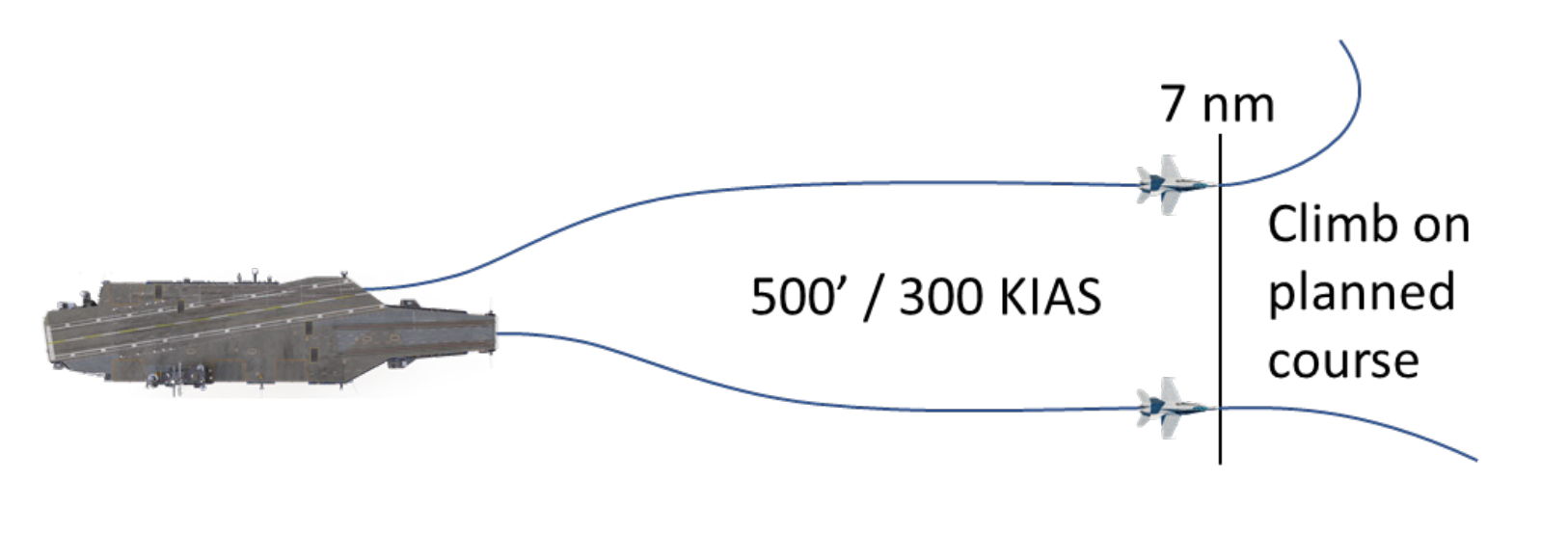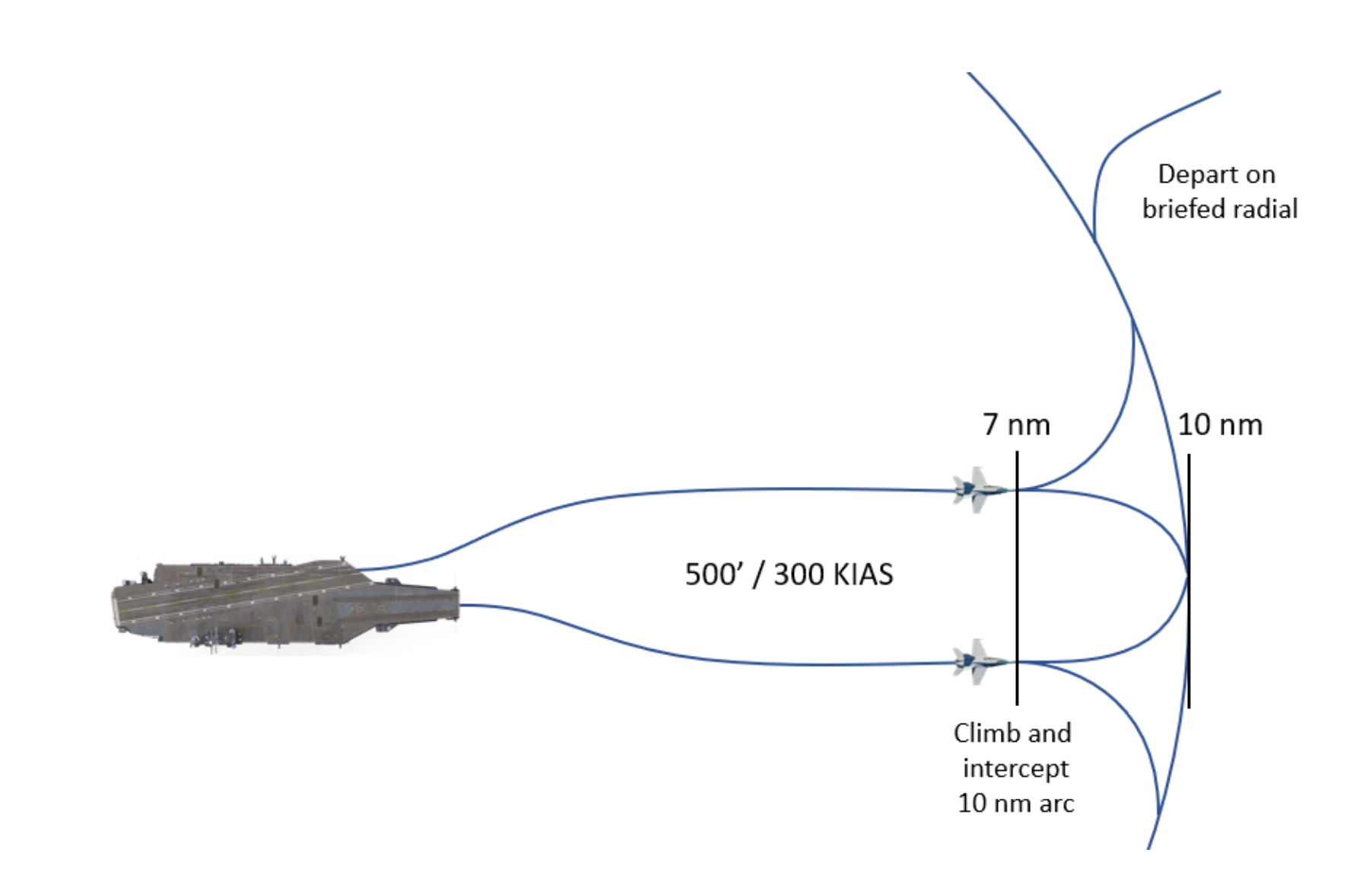¶ Objectives
This page will be dedicated to introducing the required concepts to control and manage air and deck traffic during a standard carrier operation cycle. These processes must be standardized in order to reduce ambiguity to both pilots in the air, and on the ground, and to those controllers responsible for their safety.
¶ Deck Operations
¶ Topology

¶ Spotting and Spawning
DCS will spawn players in the order that they “slot in” to the server using the following spawn locations for aircraft like the F/A-18C or A-4E. In this configuration up to 16 player aircraft can be simultaneously spawned/spotted, with an addtional 4 spawned hot onto the catapults if configured in the mission editor.
.png)
DCS unfortunately is unable to allow F-14A/B to spawn into the deck until after the deck is clear of all other aircraft. This requires F-14A/B to either launch first or last in the spotting order.
.png)
¶ Aircraft Taxi Instructions
The Air Boss and Mini-Boss are ultimately responsible for the safe taxi of all aircraft operating on the deck at any time. Pilots will contact the Air Boss on the appropriate frequency (Tower Frequency for CASE I, and II, and Departure Frequency for CASE III).
It should be noted that special care should be taken when directing aircraft to catapults 3 and 4. Catapult 3 must be spotted prior to allowing an aircraft to taxi on to Catapult 4, and Catapult 4 cannot launch with an aircraft currently in tension on Catapult 3.
¶ Air Boss Control
DCS allows players to control the CVN’s course and speed, as well as lighting control for the deck. This is a singular point of control and only one player can control these actions for the CVN at any given time. Players occupying this position will assume responsibility for placing the CVN on the desired Base Recovery Course (BRC), and ensuring deck lighting is appropriate for the launch or recovery operation underway.
¶ Launch Operations & Evolutions
¶ CASE I Departures
CASE I encompasses the majority of Visual Flight Rules (VFR) conditions, and requires the following minimum conditions:
¶ Weather Minimums:
- Cloud layer above 3,000 feet
- Visibility greater than 5 Nautical Miles
¶ Launch Intervals
The Air Boss will ensure a minimum interval of 10 seconds between catapult shots. Simultaneous launches can be accomplished when launching from catapults 1 and 3, or 1 and 4 simultaneously, or when launching from catapults 2 and 3, or 2 and 4 simultaneously.
¶ Traffic Patttern

Aircraft launching will perform a check turn away from BRC for a minimum of 20 degrees and then fly parallel to the BRC. Aircraft can automatically check out of the Tower Frequency upon exiting the 10 NM Carrier Control Zone (CCZ)
¶ CASE II Departures
CASE II Departures will be used during daylight hours with visual conditions at the carrier, but with weather conditions requiring controlled climb and separation minimums. The following minimums will determine if CASE II conditions exist:
¶ Weather Minimums:
- Cloud layer above 1,000 feet
- Visibility greater than 5 Nautical Miles
¶ Launch Intervals
Like CASE I, a minimum of 10 seconds is required between catapult shots, and the same restrictions for simultaneous launches also apply.
¶ Traffic Pattern

Aircraft will perform the same clearing turn as required by CASE I conditions and fly parallel to the BRC. The Air Boss will either brief a departure radial at launch, or have a pre-briefed radial for aircraft to depart on.